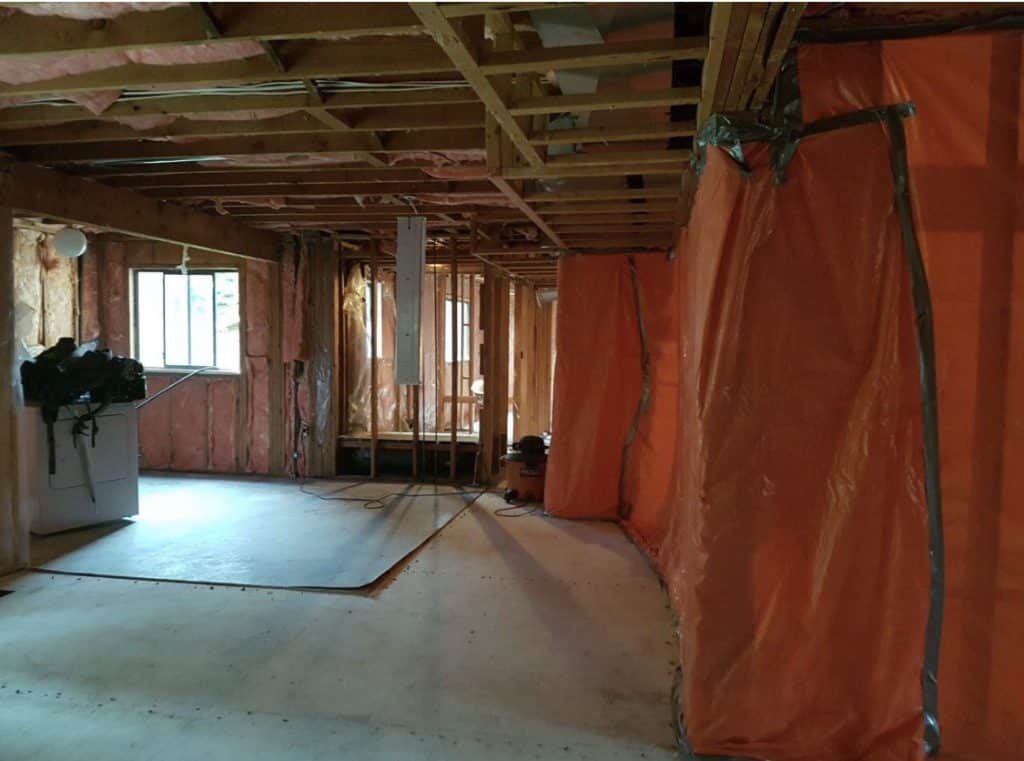Introduction: What is Asbestos and Why Should We Be Concerned?
Asbestos, once a widely used material in construction due to its heat resistance and durability, is now recognized as a major health hazard. When asbestos-containing materials are damaged or disturbed, they release tiny fibers into the air. These fibers, when inhaled, can cause severe respiratory diseases such as asbestosis, lung cancer, and mesothelioma. This is why it’s crucial to recognize the risks and take prompt action for asbestos removal in older buildings.
Common Locations of Asbestos in Buildings
Asbestos was used in a variety of construction materials, particularly in buildings constructed before the 1980s. Some of the most common places where asbestos might be found include:
- Popcorn Ceilings (Textured Ceilings) – Often used in older homes, this style of ceiling may contain asbestos.
- Pipe Insulation – Asbestos was commonly used to insulate pipes because of its heat resistance.
- Floor Tiles and Adhesives – Some older flooring tiles, especially vinyl tiles, and the adhesives used to install them contain asbestos.
- Wall Insulation and Spray-on Insulation – Insulation materials found behind walls and ceilings may also contain asbestos.
- Roofing and Exterior Siding – In some older buildings, roofing materials and siding may have been made with asbestos to increase durability.
Signs of Asbestos Damage and Its Hazards
Asbestos itself is not dangerous unless it is disturbed, which allows the harmful fibers to be released into the air. Here are some signs that indicate the presence of damaged asbestos:
- Cracking, peeling, or fraying of materials that contain asbestos, especially in older buildings.
- Visible dust or debris that could be asbestos fibers in the air.
- Health issues such as shortness of breath, coughing, or chest pain, which can result from prolonged exposure to asbestos fibers.
Asbestos exposure can cause serious health issues after prolonged exposure. Symptoms of diseases related to asbestos exposure often do not appear until years after the exposure, which is why it is critical to address potential asbestos hazards as soon as possible.
The Asbestos Removal Process: Step-by-Step
- Assessment and Identification: A licensed professional must first inspect the building to identify the presence of asbestos and assess the risk.
- Isolation of the Area: To prevent the spread of asbestos fibers, the area where removal will occur is sealed off using plastic sheeting and negative air pressure to prevent contamination of other areas.
- Safe Removal of Asbestos: Certified removal specialists wear protective suits and respiratory equipment. The asbestos-containing materials are carefully removed and placed in sealed, labeled containers.
- Transportation and Disposal: The asbestos waste is transported to an approved disposal facility that follows local regulations regarding the safe disposal of hazardous materials.
- Final Inspection: After removal, a final inspection is conducted to ensure that the area is free of asbestos contamination. Air monitoring may also be performed to confirm the safety of the environment.
Regulations and Standards for Asbestos Removal in Vancouver
In Vancouver, asbestos removal must adhere to strict safety standards set by WorkSafeBC and other regulatory bodies. Contractors must be licensed, and workers must follow guidelines for safe handling and disposal of asbestos-containing materials.
- Licensing Requirements: Only certified contractors with specialized training and equipment are allowed to remove asbestos.
- Waste Disposal Regulations: Asbestos-containing materials must be transported and disposed of in approved facilities that comply with environmental safety regulations.
- Worker Safety Standards: Workers involved in asbestos removal are required to wear protective clothing, respirators, and follow specific protocols to minimize exposure to asbestos fibers.
Cost and Timeline for Asbestos Removal
The cost of asbestos removal varies depending on several factors, including the size of the area, the type of asbestos, and the complexity of the removal. On average, asbestos removal can cost anywhere from $1,500 to $5,000 or more.
The removal process can take several days to a week, depending on the amount of asbestos to be removed and the precautions required.
Choosing the Right Contractor: When selecting a contractor for asbestos removal, it’s essential to verify their licensing, past experience, and reputation. Always ask for estimates and confirm that the company is fully insured and certified for asbestos removal.
Frequently Asked Questions (FAQ)
- Can I remove asbestos myself? No, asbestos removal should only be done by certified professionals. Attempting to remove asbestos without proper training and equipment can be extremely dangerous.
- Can new homes have asbestos? While newer homes typically do not contain asbestos, it’s still possible to find it in some building materials, such as older insulation or certain tiles. It’s always a good idea to check if you live in an older building.
- When should I act to remove asbestos? If you suspect that your home or workplace contains asbestos and the materials are damaged or deteriorating, it’s important to take immediate action. Delaying asbestos removal can lead to prolonged exposure and health risks.
Conclusion: The Importance of Timely Action and Safety
Asbestos removal is crucial for safeguarding the health of anyone who lives or works in a building that may contain it. If you suspect that your property contains asbestos, it’s important to consult with a professional to assess the situation and discuss your options. Act quickly, and ensure the work is carried out safely and in compliance with local regulations.
For more information on safe asbestos removal in Vancouver, or to schedule an inspection, don’t hesitate to contact us. Ensuring your home or business is asbestos-free is an essential step toward protecting the well-being of your family, employees, or tenants.
